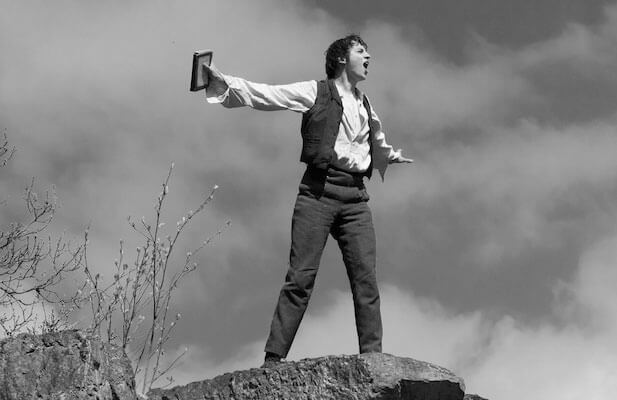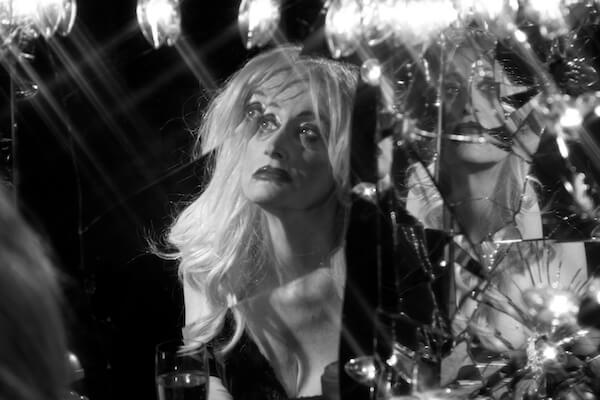German director Edgar Reitz has been exploring the meaning of “home” (“heimat” in German) for more than 30 years. He’s devoted 58 hours of film, spread across five different projects, to various installments of the “heimat” series. I’ve only seen “The Second Heimat,” which takes place in the ‘60s, and “Home From Home,” set in the 1840s.
As different as they are, both films use the imaginary town of Schabbach as an organizing principle. In both “The Second Heimat” and “Home From Home,” it’s a place to escape from; one character in “The Second Heimat” spends almost a whole decade avoiding a return to Schabbach, and the protagonist of “Home From Home” dreams of moving to Brazil.
Reitz’s work is rewarding if you’re willing to give yourself up to it, but its demands are great as well –– I watched “The Second Heimat,” which runs for nearly 26 hours, on VHS over the course of several months.
In 19th century German town, the unknown exotic appears utopian
“Home From Home” revolves around two brothers, Jakob (Jan Dieter Schneider) and Gustav (Maximillian Scheidt). Jakob constantly reads and dreams about becoming a jungle explorer. In a diary, he writes down his dreams and expresses the emotions of the whole town of Schabbach. His parents are farmers who earn a difficult living from the soil and try to get Jakob more involved in manual labor. Gustav is in the army when the film begins, but his return from military service makes life difficult for Jakob, as the two men are both taken with village beauty Henriette (Antonia Bill).
Reitz doesn’t avoid close-ups, but he seems to prefer Steadicam long shots. The rural landscape gets loving attention. While it’s quite pretty, the village of Schabbach looks ugly. Its people’s poverty isn’t glossed over; its jail looks like a medieval dungeon. The film is in black-and-white, for the most part. Reitz takes advantage of the uncanny glow that black-and-white digital video often has; he’s cited German Expressionism as an influence. While “Home From Home” looks nothing like the ‘20s films of F. W. Murnau and Fritz Lang, it doesn’t look like a realistic attempt to film the past either. For one thing, it occasionally throws in bits of color, usually red, orange, and yellow. These aren’t simple gimmicks –– they hint at another world around the corner.
Jakob is written off by many Schabbach residents as a terminal space case. He’s always got his nose in a book and seems to be trying to learn the languages of indigenous Brazilian tribes in preparation for emigration there. However, there’s a mystical streak running through the film. Despite two scenes in church, the characters’ spirituality isn’t expressed via organized religion, as Reitz notes in the press kit. Their dreams of emigrating to Brazil have something to do with wanting a better standard of living, but they also suggest a utopian vision of a land where food is easy to come by and winter never happens. From the perspective of 2015, this is a little naïve –– after all, slavery was still legal in 1840s Brazil –– but it’s part of this film’s power to get us to adopt another century’s point of view for four hours.
Jan Dieter Schneider’s performance helps. He seems more modern than any other character in “Home From Home.” In part, this is because most of the rest seem so primitive –– a disabled girl’s family refers to her as “Satan’s child,” and they seem to mean it literally. The fact that Jakob delivers a non-stop voice-over for the film’s first two-thirds contributes to audience identification with him as well. His romanticization of Indians –– such as taking off a shoelace when a falcon’s feather falls off to create an impromptu headband –– may seem patronizing now, but it’s better than simply writing them off as savages. (The character’s nickname around Schabbach is “the Indian.”) The other Germans who want to emigrate to Brazil seem to expect paradise to be handed to them –– learning Portuguese isn’t part of the deal for them. Jakob at least makes some effort to study the country.
Not surprisingly, the “Heimat” films have overshadowed the rest of Reitz’s work. “The Second Heimat” ranks with the best of New German Cinema, but it’s been impossible to tell if Reitz’s non-“Heimat” oeuvre is in the same class. Fortunately, Anthology Film Archives is preceding the week-long run of “Home From Home” with two earlier, much shorter features –– 1967’s “Table of Love” and 1977’s “Zero Hour” –– and a program of shorts. Now in his 80s, Reitz may not add anything more to the 58 hours of “Heimat.” “Home From Home” isn’t the kind of definitive post-mortem on a decade that “The Second Heimat” was, but it will speak to anyone who’s ever felt trapped by their surroundings and dreamed of escape. Here, Brazil is a state of mind, not just a country.
HOME FROM HOME: CHRONICLE OF A VISION | Directed by Edgar Reitz | Corinth Films | In German with English subtitles | Opens Sep. 11 | Anthology Film Archives, 32 Second Ave. at Second St.; anthologyfilmarchives.org

















